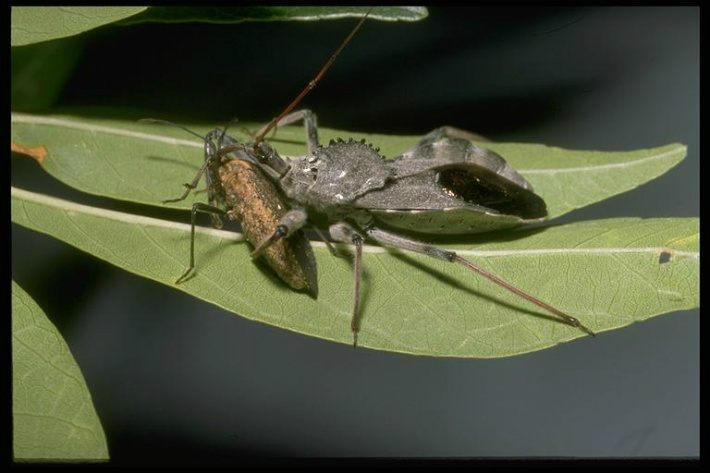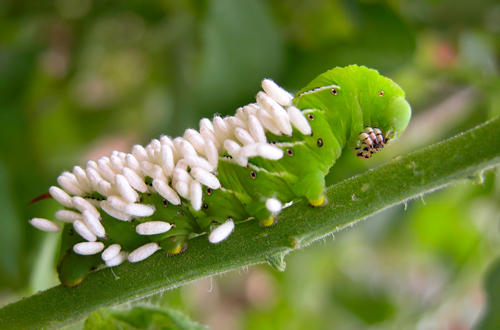
In a previous article, we reviewed the importance of insects as pollinators for flowers, fruits and other plants in the landscape. This time we’ll take a look an often overlooked benefit of insects — their role as predators by feeding on insects that cause damage to your favorite plants.
While some of these helpful insects have a painful bite or sting, their impact is far more beneficial. Literally thousands of beneficial species exist, but the most common ones we see include lady beetles (ladybugs), praying mantises, paper wasps and parasitic wasps.
- Probably the most recognized beneficial insect in the landscape is the lady beetle, or ladybug. They may or may not have spots and range in color from yellow to red to pink, and even black or gray. Ladybugs feed on sap-sucking insects like aphids, mealybugs and scales, as well as consume insect eggs and mites. Ladybugs can be purchased as adults or larvae from nurseries and online vendors for release in your own personal space. The best time to release them is early morning or at dusk. Ladybug larvae look like tiny alligators and are voracious predators. On the negative side, some species make pests of themselves by hibernating indoors in the winter.
- Believe it or not, the yellow and red paper wasps that build nests under the eaves of your home are actually considered very beneficial. They feed on caterpillars, fly larvae and beetle larvae, as well as pollinate flowers while feeding on nectar. They only become pesky when you get too close to their nests.
- Another type of wasp that goes about its business unnoticed is the parasitic wasp. These wasps range in size from the period at the end of this sentence to one inch or larger. There are more than 100,000 species of parasitic wasps on earth that use caterpillars, beetle larvae, fly larvae, insect eggs, aphids, scales and mealybugs as hosts in which to lay their eggs for development of offspring. If you like the “Alien” movies, then you’ll love these guys! The best part: humans are NOT on the menu!

- As spring changes to summer in south Texas, praying mantises start appearing in the landscape. These predators feed on any insects they can catch, including other beneficial insects. They are interesting to watch and use camouflage and mimicry as means to stalk their prey. The females lay several egg cases over the season and they will overwinter to hatch the following spring.
Insects prey on each other every day, and when you include other critters like spiders in the predator arena, there are lots of reasons to be thankful for having them around. So, don’t be afraid of bugs. They could be eating all the other bugs.




